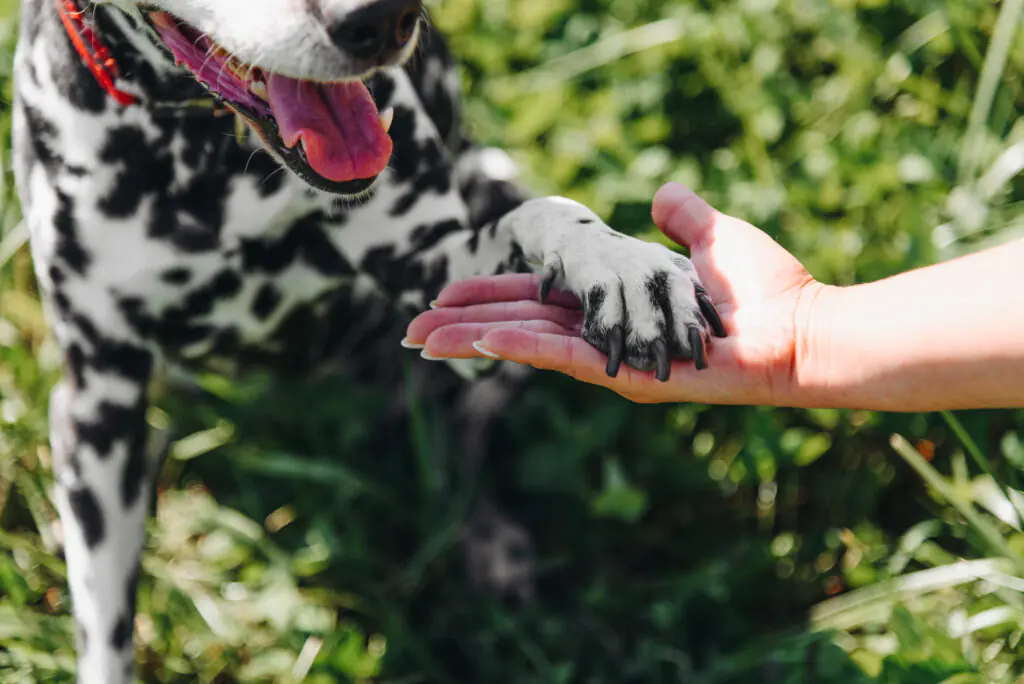
We all know whether we’re left or right handed—but have you ever wondered if your dog has a dominant paw?
Yep, it’s a real thing! Just like hoomans, dogs can show a preference for one side over the other. Whether your pooch is a righty, a lefty, or even ambi-pawed (that’s a thing too!), discovering your dog’s paw preference is not only fascinating, it’s also a fun way to bond and learn more about your four-legged friend.
So, is your dog a leftie or a rightie? Let’s dig in.
What Does “Paw Preference” Mean?
Paw preference—also called “lateralisation”—refers to which paw your dog tends to favour for tasks. Just like we naturally reach for things with our dominant hand, dogs often lead with their dominant paw.
Scientists believe that paw preference is linked to how the brain is wired. The left side of the brain controls the right side of the body and vice versa. Some studies even suggest that left-pawed and right-pawed dogs might have slightly different temperaments.
How to Test Your Dog’s Paw Preference
Finding out your dog’s dominant paw is surprisingly easy—and pretty entertaining! Here are a few simple ways to test it at home:
The Paw Shake Test
Offer your dog your hand and ask them to “shake.” Which paw do they usually give first? Try this 10–20 times over a few days to see if a pattern emerges.
The Kong Test
Place a treat inside a Kong or similar toy and see which paw your dog uses to hold it steady while trying to get the treat out. The paw they use most often could be their dominant one.
The Step Test
Watch your dog as they walk up stairs or over a log. Which paw do they place first? Take note over several occasions to spot any habits.
The Food Bowl Test
Slide your dog’s bowl slightly to one side. Which paw do they use to try and bring it back? Again, repeat a few times for consistency.
It’s important to do each test multiple times—dogs, like people, can be ambidextrous, and they might just be in a playful mood one day. Keep it fun and positive, and be sure to offer lots of praise and Laughing Dog treats for participation.
So, What Does It Mean If Your Dog Is Left- or Right-Pawed?
While more research is still being done, some studies suggest that left-pawed dogs might be slightly more reactive or sensitive to new situations, while right-pawed dogs tend to be more confident and bold. That said, every dog is unique, and paw preference is just one small piece of their delightful personality.
Can You Train Paw Preference?
Not really—but you can train your dog to use both paws! Teaching tricks like “high five,” “shake,” or “wave” is a great way to strengthen co-ordination, improve focus, and keep your dog mentally stimulated. Whether they’re a lefty or a righty, they’ll love the extra attention and tasty rewards.
Why It’s Fun (and Useful) to Know
Aside from being a cute bit of trivia to share at the dog park, knowing your pup’s paw preference can actually help in small ways. If your dog’s ever injured, you’ll be more in tune with their comfort levels. And for working or assistance dogs, understanding which side they favour can help tailor training more effectively.
Plus, it’s just another quirky thing to love about them. Because let’s be honest—every dog has their own quirky little habits, and this is just one more to add to the list.
So grab a toy, a handful of treats, and start your own paw-preference experiment—you might just learn something new about your best furry friend.
And hey, if nothing else, it’s a paws-itively adorable way to spend a rainy afternoon.

